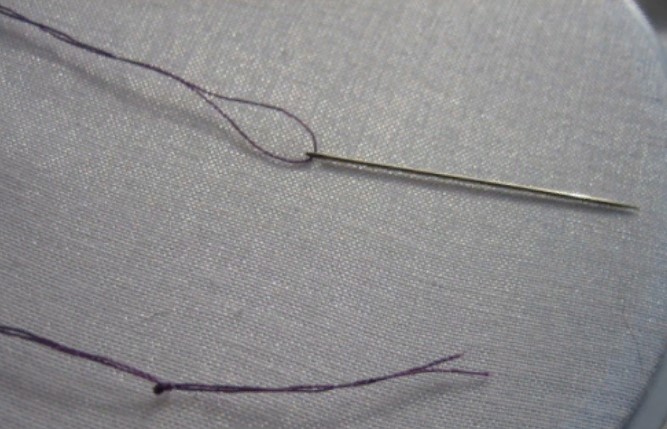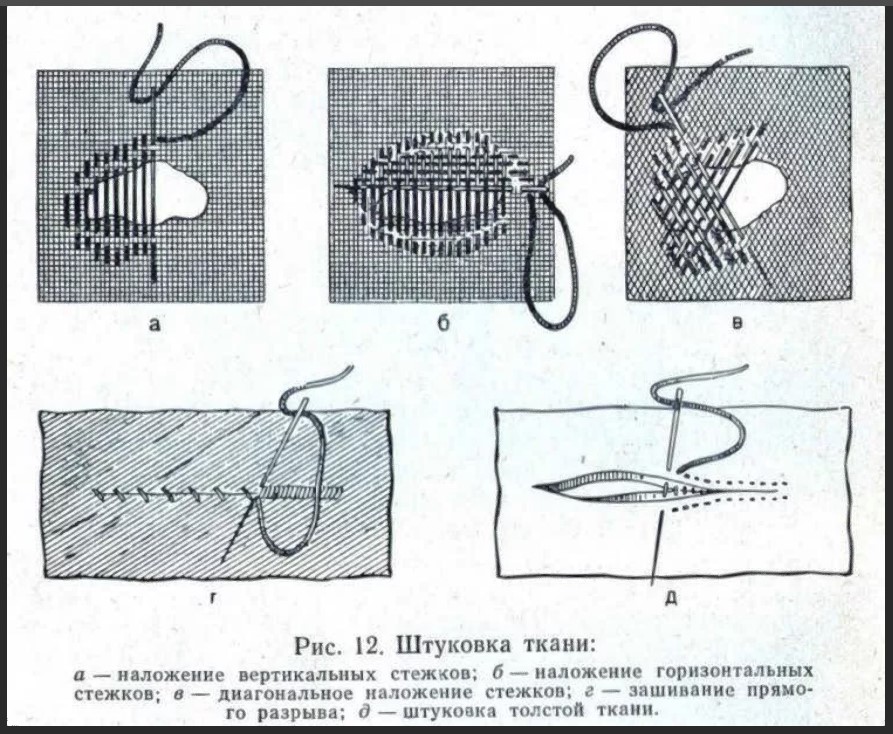 Sewing is a very useful hobby. It helps not only to have an interesting time, but also to create beautiful and useful things with your own hands: clothes, home textiles, toys and much more. Hand stitches are considered the basis of all sewing craft. It is recommended that all beginning needlewomen begin their acquaintance with this craft directly by mastering such seams. In this article we will tell you how to make various stitches correctly.
Sewing is a very useful hobby. It helps not only to have an interesting time, but also to create beautiful and useful things with your own hands: clothes, home textiles, toys and much more. Hand stitches are considered the basis of all sewing craft. It is recommended that all beginning needlewomen begin their acquaintance with this craft directly by mastering such seams. In this article we will tell you how to make various stitches correctly.
Preparing to sew
 You should first prepare all the necessary tools and materials.
You should first prepare all the necessary tools and materials.
These include:
- needles and pincushion;
- threads;
- textile;
- thimble;
- sharp scissors;
- tape measure;
- tailor's pins;
- tailor's chalk;
- iron with steam function.
Iron the fabric
Before sewing, the prepared fabric must be ironed on the wrong side with a hot iron. This is especially true for fabric that tends to shrink, as this method will help set it. In addition, ironed fabric is much easier to work with.
Insert a needle into a thread
The end of the thread should be threaded into the eye of the needle. If this is difficult to do, it is recommended to purchase a special auxiliary device that will significantly facilitate the task for people with low vision.

Hand stitches can be made using either a single or double thread. If you plan to sew with a single thread, the thread should be threaded into the needle so that one end of the thread is longer. Then you should cut the required length and tie a knot at the tip of the long thread. After this you can start sewing.

Advice! To make a knot, the thread should be wound around your finger until a loop is formed. Then you need to roll up the formed turns with your thumb and pull the end of the thread.

If the seams need to be made with double thread, you need to thread it through the needle so that both ends of the thread are the same length. Then you need to tie a common knot and start sewing.

How to make the 1st stitch?
It is necessary to insert the needle from the wrong side of the material and pull it out from the front side. Then you should insert the needle into the material near the original piercing site and completely pull it out along with the thread to the wrong side. The first stitch is ready.

Important! The stitch needs to be made tight enough so that it can lie flat on the fabric without pulling the fabric too tightly.
Straight stitch
This stitch is made by repeating the two steps used for the first stitch. In this case, it is necessary to ensure that the stitches are of the same length and located close to each other.

The last stitch should be finished by piercing the fabric with a needle from the right side and tying a securing knot as close to the fabric as possible so that the stitching does not move or stretch.
Other stitches
There are several basic options for hand stitches.The ability to make such seams will certainly be useful to any needlewoman more than once.
Basting stitch
Used for tightening fabric, placing pintucks, darning and seams that do not experience stress. To make a seam like this, you need to make several stitches forward, evenly inserting the needle into the fabric and bringing it to the surface before pulling the thread.

The number of stitches directly depends on the thickness of the fabric. The length of the stitches and the distance between them are influenced by the location of the seam.
Zigzag stitch
In this case, the stitches are made from side to side. This stitch is used when working with elastic fabric or to strengthen button loops.
To lay it, you first need to fold the fabric in half and secure it with a pin. Then you need to open the edge slightly and insert the needle so that it comes out from the front side. Then you need to make a vertical stitch up and return the needle to the starting point.

Then you should make a diagonal stitch to the left and return the needle to the right side under the end point of the diagonal stitch. These steps must be repeated until the very end of the seam, which must be completed with a vertical stitch.
Blind stitch
It is used for maximum inconspicuous fixation of folded edges of fabric, attachment of lining and pockets.

In the process of making a blind seam, the needle must be inserted from right to left, grabbing no more than one thread of the upper fabric, and then grabbing the fabric of the upper fold of the hem. There is no need to pull the thread tightly.

Important! The blind seam should be made with a thread that matches the color of the main fabric.
How to sew 2 parts?
You need to attach the two parts with their front sides facing each other.The edges along which they need to be fastened must be aligned and stitched along a line that follows the contours of the edge.

Threads on how to sew 2 pieces of wool
After completing the parts, you need to slightly pull them to the sides and make sure that the seam you make holds them together well and the thread is barely noticeable.

How to patch a hole?
Repairing holes is quite easy. The edges of the resulting hole need to be connected towards each other and secured with a seam. It is recommended to make as frequent stitches as possible during the process for a tighter bond.

Tips and tricks for beginners
For those who are just starting to learn how to sew with a needle and thread, it will be useful to familiarize yourself with the following recommendations:
- It is better to purchase only high-quality needles for hand stitches from manufacturers that have already proven themselves well. It is recommended to give preference to needles with a “golden eye”, which are coated with a special coating. This coating ensures easy threading of the needle and easy sliding of the needle through the fabric.
- It is necessary that the needle matches the thickness of the threads chosen for sewing. The thicker the needle, the more effort will have to be exerted when moving it through the fabric. For this reason, it is not recommended to select a thick needle for hand sewing with fine thread.
- Crooked, dull or rusty hand needles are unsuitable for use. In addition, embroidery needles with a blunt tip should not be used for hand sewing. Such needles are used exclusively for cross stitch on canvas.
- When making hand stitches, it is recommended to use a thimble. This will help protect your fingers and nails from accidental damage and will significantly speed up the process.

Hand stitches and seams are mostly used for embroidery and needlework.But sometimes they are used even when sewing clothes on a sewing machine. In addition, such seams cannot be dispensed with when trying on and basting clothing parts.


 0
0




